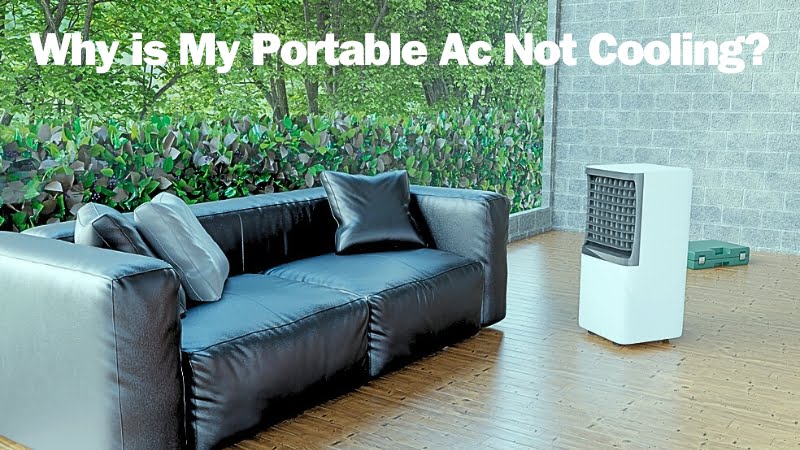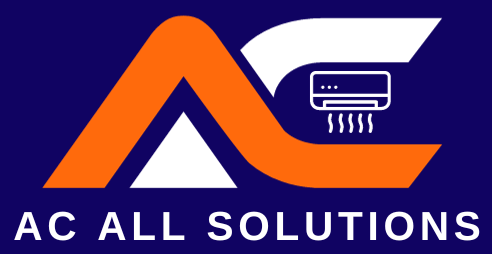Your portable AC may not be cooling due to low refrigerant levels or a dirty air filter. Low refrigerant levels can hinder the cooling process, while a dirty air filter can restrict airflow, impacting the cooling ability of the unit.
It’s important to ensure that the refrigerant levels are adequate and the air filter is clean to allow efficient cooling. Regular maintenance and cleaning are essential to ensure optimal performance and cooling capacity of your portable AC unit. By addressing these issues, you can potentially resolve the cooling problem and ensure the effective operation of your portable AC.
Portable Ac Cooling Issues Explained

Portable air conditioners are designed to provide convenient cooling solutions for single rooms or smaller spaces. However, there are instances when these units may not perform optimally, leaving users frustrated with inadequate cooling.
In this section, we will delve into common reasons for inadequate cooling, the impact of environmental conditions, and maintenance factors to consider, all of which contribute to understanding portable AC cooling issues.
Common Reasons For Inadequate Cooling
When your portable air conditioner fails to provide the desired level of cooling, several factors could be at play:
- Dirty air filter leading to reduced airflow
- Insufficient refrigerant levels compromising cooling efficiency
- Blockage or obstruction in the air vents hindering airflow
- Faulty thermostat causing inaccurate temperature regulation
The Impact Of Environmental Conditions
Environmental factors play a significant role in the performance of portable air conditioners. Understanding the impact of these conditions is crucial:
- High humidity levels may strain the AC’s cooling capacity
- Extreme heat can impede the unit’s ability to cool effectively
- Poor insulation in the room can lead to heat seeping in, hindering cooling
Maintenance Factors To Consider
Maintaining your portable air conditioner is essential to ensure optimal cooling performance. Consider the following maintenance factors:
- Regular cleaning of the air filter to enhance airflow
- Annual professional inspection to check refrigerant levels and address any leaks
- Cleaning and unblocking air vents to facilitate proper airflow
- Calibrating and testing the thermostat for accurate temperature control
Troubleshooting Guide: Not Cooling?
Is your portable air conditioner failing to bring relief from the heat? With rising temperatures, it can be incredibly frustrating if your unit isn’t cooling as it should. To help you troubleshoot this issue effectively, we’ve provided a comprehensive guide to handling a portable AC that’s not cooling.
Whether it’s a simple fix or a more complex problem, this article will equip you with the knowledge needed to diagnose and address the issue.
Step-by-step Diagnostic Approach
When your portable AC isn’t cooling as it should, a systematic diagnostic approach can help in identifying the root cause. You can start by checking the basics such as the power supply, air filters, and thermostat settings.
Moving on to more advanced troubleshooting, assessing the compressor, refrigerant levels, and internal components becomes necessary. By following a step-by-step diagnostic approach, you can efficiently pinpoint the problem and take appropriate measures to resolve it.
Identifying Simple Fixes Versus Complex Ones
It’s crucial to differentiate between simple fixes and complex issues when dealing with a portable AC that’s not cooling. Simple fixes may involve cleaning or replacing the air filter, adjusting the thermostat settings, or ensuring proper ventilation around the unit.
On the other hand, complex problems such as compressor failure, refrigerant leaks, or internal component malfunctions require professional attention. Understanding the distinction between simple fixes and complex issues is essential for effective troubleshooting.
When To Call A Professional
While some portable AC issues can be resolved through DIY troubleshooting, certain situations necessitate the expertise of a professional. If you’ve exhausted all possible simple fixes and the unit still fails to cool adequately, it may be time to seek professional HVAC assistance.
Additionally, if you suspect more complex issues such as refrigerant leaks or compressor malfunctions, calling in a professional technician is the best course of action to ensure proper diagnosis and repair.
Key Components Inspection
When troubleshooting why your portable AC is not cooling, it’s essential to conduct a thorough inspection of the key components. By focusing on critical aspects such as the exhaust hose, air filter cleanliness, and proper air intake, you can identify potential issues and rectify them effectively.
Checking The Exhaust Hose
Airflow through the exhaust hose is crucial for the efficient functioning of your portable AC. Ensure that the hose is not kinked, bent, or obstructed, as this can impede the expulsion of hot air from the unit.
It’s also important to examine the seal between the hose and the window to prevent any air leaks that may impact the cooling process.
Importance Of Air Filter Cleanliness
The air filter plays a pivotal role in maintaining the cooling efficiency of your AC. Regularly inspect and clean the filter to prevent dust and debris buildup, which can restrict airflow and diminish cooling performance.
A clogged air filter can also strain the AC unit, leading to increased energy consumption and reduced cooling capacity.
Ensuring Proper Air Intake
Check that the condenser and evaporator coils are free from dirt and debris, as these components facilitate the exchange of heat necessary for cooling.
Additionally, ensure that the intake vents are unobstructed to allow for optimal air circulation, enabling the AC to operate at its full capacity.
Optimizing Performance For Cooling
If your portable AC is not cooling, optimizing its performance can be key. Check for air filter clogs, ensure proper ventilation, and inspect for refrigerant leaks. Cleaning the unit and placing it in an optimal location can also improve cooling efficiency.
Strategic Placement In The Room
Positioning your portable AC in the right spot can significantly impact its cooling performance. Place the unit near the center of the room to ensure even distribution of cool air. This will help to optimize its cooling efficiency across the entire space.
Seal Windows And Doors Effectively
Ensure all doors and windows in the room are tightly sealed to prevent cool air from escaping and hot air from entering. Use weather stripping or caulking to seal any gaps or cracks around windows and doors.
This will help your portable AC operate more efficiently, maintaining the desired temperature with minimal energy wastage.
Adjusting Settings For Maximum Efficiency
Optimize your portable AC’s settings for maximum efficiency. Set the temperature to a comfortable, but not overly cold, level to reduce energy consumption.
Additionally, utilizing the fan-only mode during cooler periods can help maintain a comfortable environment without the need for heavy cooling.
Routine Maintenance For Longevity
Routine maintenance is crucial for ensuring the longevity and optimal performance of your portable air conditioning unit. Neglecting routine maintenance can lead to various issues, including inadequate cooling, higher energy consumption, and potential breakdowns, costing you time and money in the long run.
Cleaning And Replacing Filters Regularly
Regular cleaning and replacement of air filters are essential for the efficient operation of your portable AC. Clogged filters restrict airflow, reducing the unit’s cooling capacity.
Make it a habit to clean or replace the filters every 2-3 months, or more frequently if the unit is used frequently or in a dusty environment.
Coils And Refrigerant Checks
Regular inspection and cleaning of the evaporator and condenser coils are vital for efficient heat transfer and cooling. Additionally, check the refrigerant levels and ensure there are no leaks. Low refrigerant levels can significantly impact the cooling efficiency of the unit.
Electrical Connections And Thermostat Calibration
Inspect and tighten all electrical connections to prevent potential issues associated with loose connections. Additionally, calibrate the thermostat to ensure accurate temperature readings, avoiding unnecessary strain on the unit.
Frequently Asked Questions
How Do You Fix A Portable Air Conditioner That Is Not Cooling?
To fix a portable AC not cooling, check for blockages in the air filter and vents. Clean or replace the filter, ensure proper ventilation, and inspect for any leaks. Additionally, check the thermostat settings and the power supply. If issues persist, consult a professional technician for further assistance.
Why Is My Ac Running But Not Getting Cooler?
Your AC may not be cooling if the filter is dirty, the refrigerant is low, or there’s a problem with the condenser. It could also be due to blocked airflow or a malfunctioning thermostat. Have a professional technician inspect and troubleshoot the issue for a proper solution.
Do Portable Air Conditioners Need To Be Drained?
No, portable air conditioners typically do not need to be drained as they usually come with a self-evaporative feature. This means that the condensate water generated during the cooling process is recycled and used to help cool the unit, eliminating the need for manual draining.
Conclusion
It’s essential to remember that troubleshooting your portable AC requires thorough and methodical attention to detail. By examining potential causes and implementing the necessary solutions, you can restore your unit’s cooling functionality.
When in doubt, seek professional assistance to ensure your portable AC continues to provide the cooling comfort you need.
